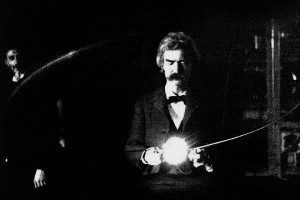 Quantum physicist Wolfgang Pauli declared that dreams were his “secret library”. He recorded dreams and shared detailed reports with Jung over the quarter century before his premature death. Einstein, Niels Bohr, Kekule – and Newton in his own day, and Hypatia in hers – were all dreamers. They drew inspiration from sleep dreams and developed the ability to slip into twilight states of consciousness.
Quantum physicist Wolfgang Pauli declared that dreams were his “secret library”. He recorded dreams and shared detailed reports with Jung over the quarter century before his premature death. Einstein, Niels Bohr, Kekule – and Newton in his own day, and Hypatia in hers – were all dreamers. They drew inspiration from sleep dreams and developed the ability to slip into twilight states of consciousness.
Tracking the relationship between science and dreaming requires us not only to examine the role of dreaming in the creative process of the scientists but to inquire into how the science of dreaming can help us to test new scientific models of the universe, like super string theory or theories of parallel universes.
The new physics shows us a universe that baffles common sense, a universe that operates along utterly different lines from one in which the commuter train leaves at 6:05 (if we’re lucky). Yet the findings of leading-edge physics have brought us scientific confirmation of the worldview of shamans, mystics and dreamers, who have always known that there is a place beyond surface reality where all things are connected, a place beyond time where all times are accessible, and that consciousness generates worlds. How do we bring all of this together with our lived experience, our human needs, and our hopes for world peace and a gentle upward evolution of our species? Through dreaming.
Dreaming, we swim in the quantum soup of possibilities, where the act of looking brings things into being. Dreaming, we discover the existence of alternate realities and parallel worlds – including dimensions that escape human conceptions of form – and can actively explore them.
Dreaming, we confirm that consciousness is never confined to the body and that we can reach people and objects at a distance. Dreaming, we are time jumpers, able to visit (and possibly influence) both past and future. Dreaming, we can experience the six (or seven) “hidden” dimensions of physical reality, separated from our everyday sensory perception at the time of the Big Bang, that are posited by string theory.
As dreamers, we can achieve experiential understanding of the multidimensional universe that science is modeling. As active dreamers and researchers inside multidimensional reality, we can contribute in important ways to what will be – if we are lucky – the foremost contribution of the twenty-first century to science and evolution: the emergence of a true science of consciousness.

